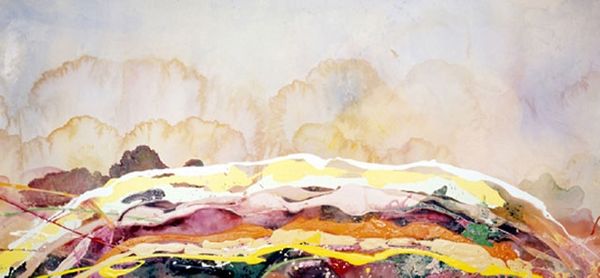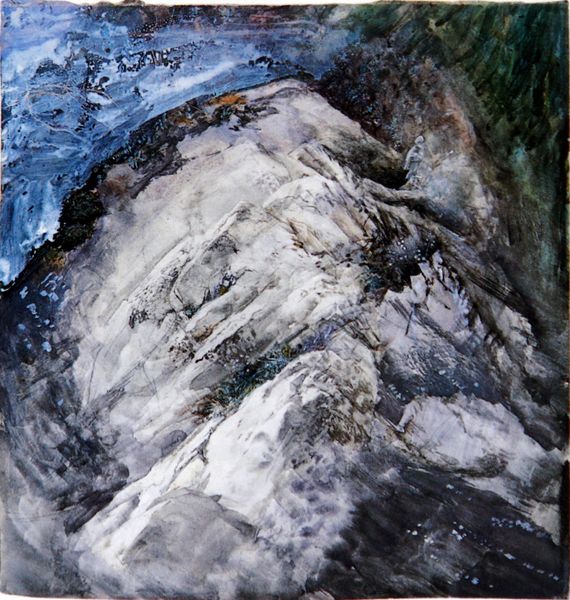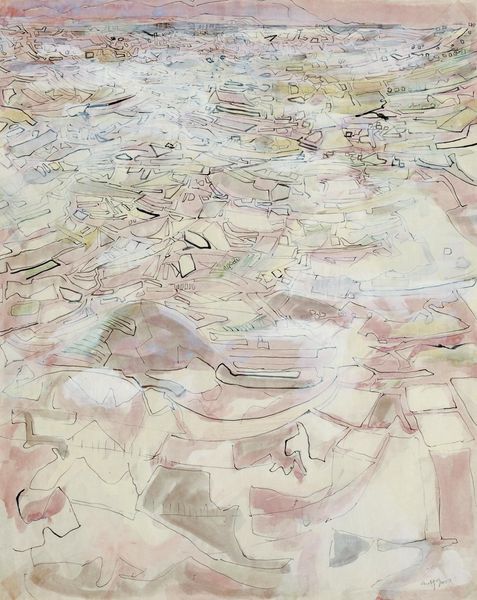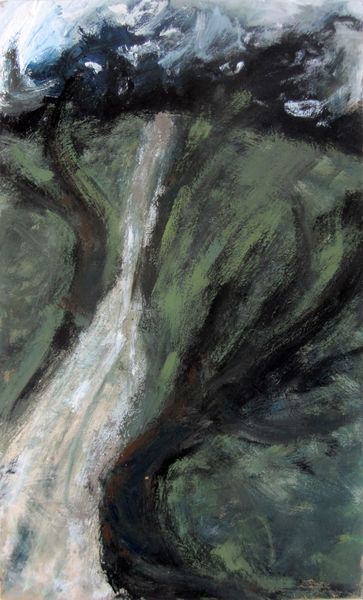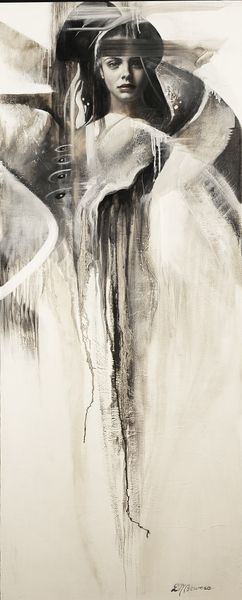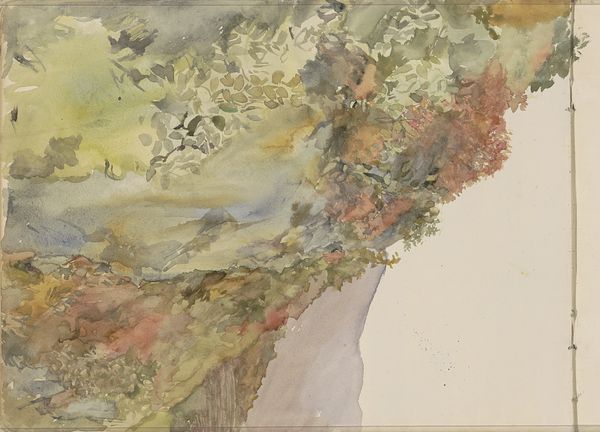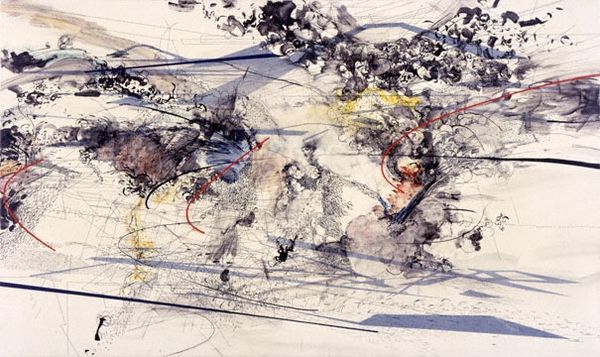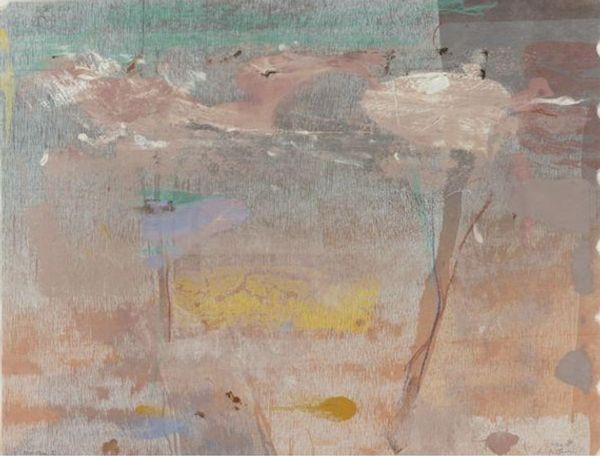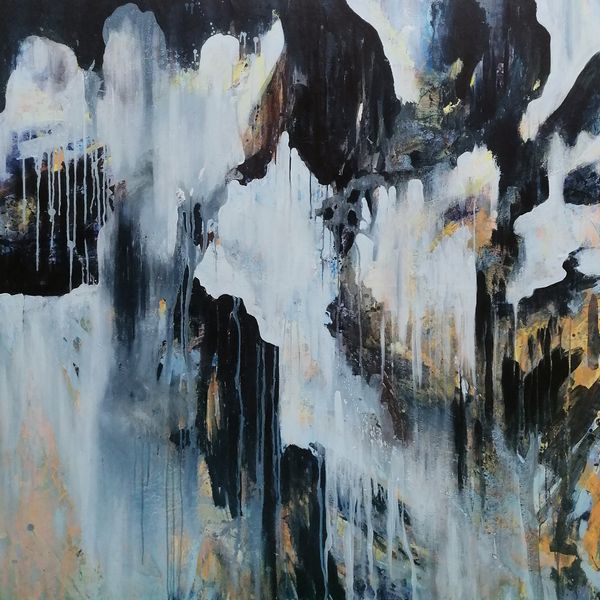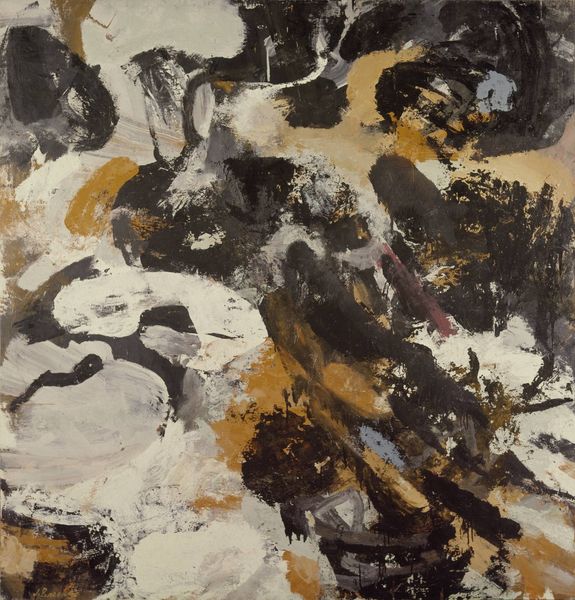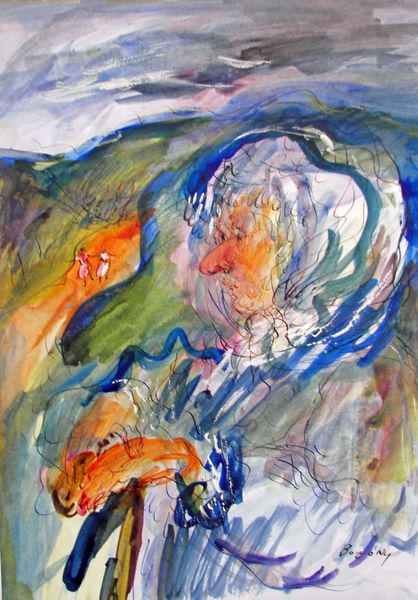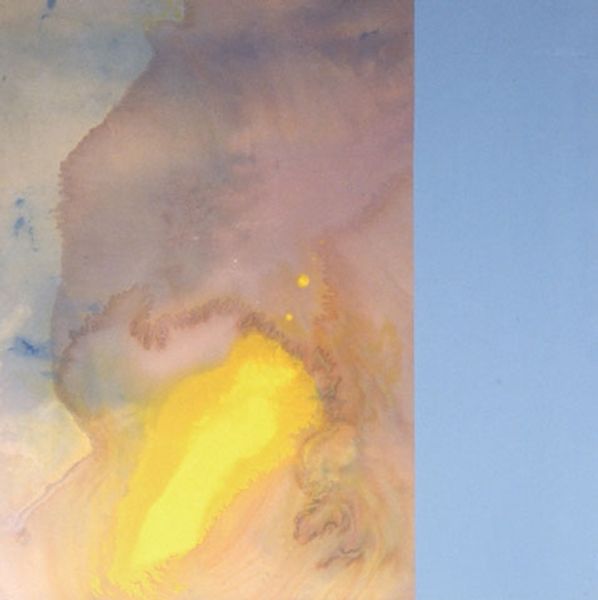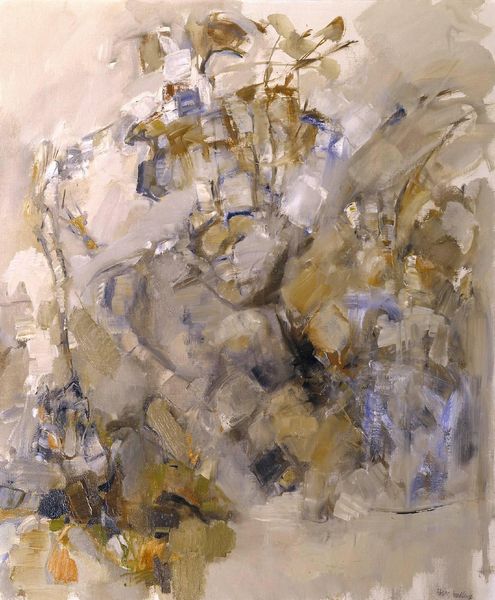
Copyright: Public domain
Thomas Moran made this watercolor and graphite artwork, East wall of the canyon from Inspiration Point, in 1892. It may seem worlds apart from other forms of making, but it is important to remember that landscape paintings also rely on materials and processes. Notice the loose, fluid quality of the washes, made possible by the inherent properties of watercolor pigment. When mixed with water, these pigments allow for translucent layers of color to be applied to the paper, capturing the play of light on the canyon walls. The artist also used graphite to add detail and definition, especially in the foreground rocks. Consider the social context in which Moran was working, at a time of growing industrialization and urbanization in America. His romanticized depictions of the natural world offered a sense of escape from the realities of modern life, catering to a growing market for landscape art among the middle and upper classes. By focusing on the materials and methods used to create this artwork, we can gain a deeper appreciation for the artist's technical skill, and its wider cultural significance.
Comments
No comments
Be the first to comment and join the conversation on the ultimate creative platform.
